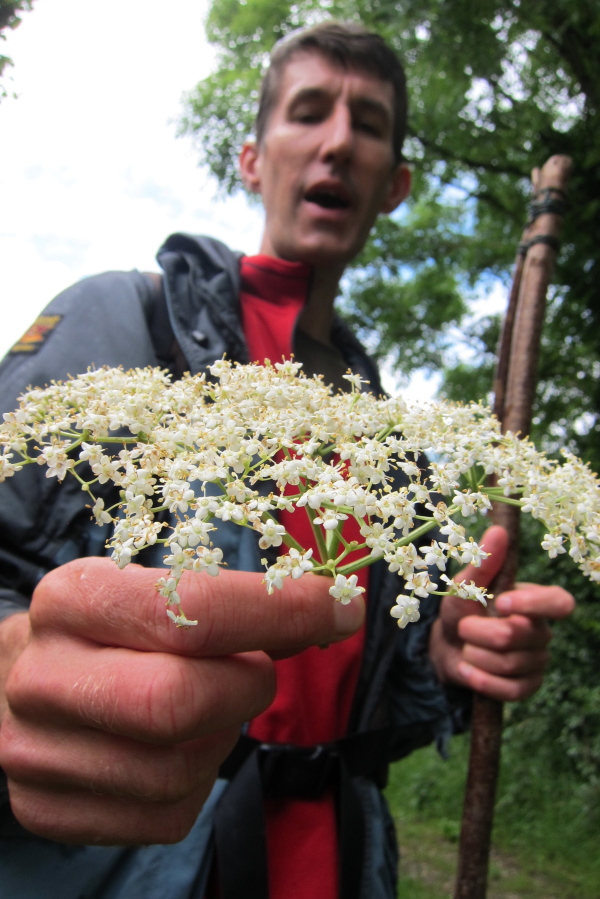TOLLER PORCORUM, England — “This,” said our guide James Feaver, “is our main course.”
We were standing in front of a dung heap in a high meadow in the English countryside. Pushing up out of the ooze was a low-growing weed. He bent down, plucked a sprig and held it up.
“Fat hen. Humans have eaten it for thousands of years. We’re going to need a lot of it.”
After a glance among us, my family and I set about picking with an approximation of gusto. When you are foraging for your food you can’t be too squeamish about little things like cow dung beneath your fingers.
I have long been fascinated with the idea of living off the land, finding sustenance among the wild plants that teem in hedges and fields. So a week’s holiday in Dorset, in southwest England — a county bursting with picture-book countryside — gave me the chance to see how abundant nature’s larder really is.
Foraging is increasingly popular in the U.K. and there are many teachers to choose from. On a recommendation, I contacted Hedgerow Harvest and booked a half-day course for me, my partner Fonthip and our 7-year-old son, Jimmy.
On a classic English summer’s day — meaning we experienced all weather conditions in one afternoon — we met up with Feaver, who gave up office work for professional foraging eight years ago. He now runs courses in south and southwest England, but mostly in Dorset, his adopted home.
We met him in the village of Toller Porcorum, donned rubberiboots and waterproof jackets, and set off in search of wild provender.
We spent the next few hours walking through lanes hedged in with soaring banks, down tracks drenched in birdsong, beside clear streams and across uncut meadows in search of ingredients for a three-course meal.
If like me you can’t tell wild sorrel from a blade of grass, this becomes daunting. But Feaver has gimlet eyes and an encyclopedic knowledge of the edible.
High in a hedgerow, a spray of tiny white flowers stood proud of the foliage. He hooked it with his hazel stick, pulled it down to picking height, and inhaled.
“The smell of summer,” he said.
For centuries, country-folk have used the fragrant elderflower to add a zesty flavor to food and drink. Now it would bring its zing to our dessert. We plucked head after head.
In quick order we found red currants, wild mint and tiny, sweet, wild strawberries. The wicker basket James provided — a nice touch — began to fill.
So far so idyllic, but this arcadia comes with thorns.
Of the many rules of foraging the most important is this: Don’t eat anything unless you are 100 percent certain you know what it is. Some edible plants look uncannily like ones that are deadly. For example, cow parsley goes well in salads but is easily mistaken for something you wouldn’t want near your dinner plate: hemlock.
Other rules include don’t uproot anything (it’s illegal), only take sustainably and don’t pick from ground-hugging plants near footpaths “where dogs can wee on them.” That was Jimmy’s favorite rule.
Time was getting on. From Toller Porcorum we drove down steep, narrow lanes to a nearby beach. Here you can see the stunning coastline sweep in an arc from Portland in Dorset right into neighboring east Devon. A trove of fossils has earned it the name Jurassic Coast and UNESCO World Heritage status.
But we weren’t there for beauty or geology. We were there for sea beet leaves, a close relative of garden spinach that grows in low belts along the pebbly foreshore. More free food, right at our feet.
But don’t go thinking you can kiss goodbye to supermarkets just because your eyes have been opened. That’s not the idea of the course.
“Foraging isn’t really about survival,” Feaver had said at the start. “It’s about taking the best of the wild and adding it to conventional ingredients to make great tasting food.”
Great tasting? We’d be the judges of that.
Back at our holiday cottage, Feaver supervised the preparation of the feast. For starters, sea beet soup. For main course, fat hen pesto bake, with more fat hen as a side dish, washed down with sparkling elderflower wine. To finish, elderflower and gooseberry fool, garnished with wild strawberries.
It was a revelation, especially the sea beet soup which was one of the most delicious soups I have ever had: rich, velvety and homey, like swallowing a big bowl of contentment.



